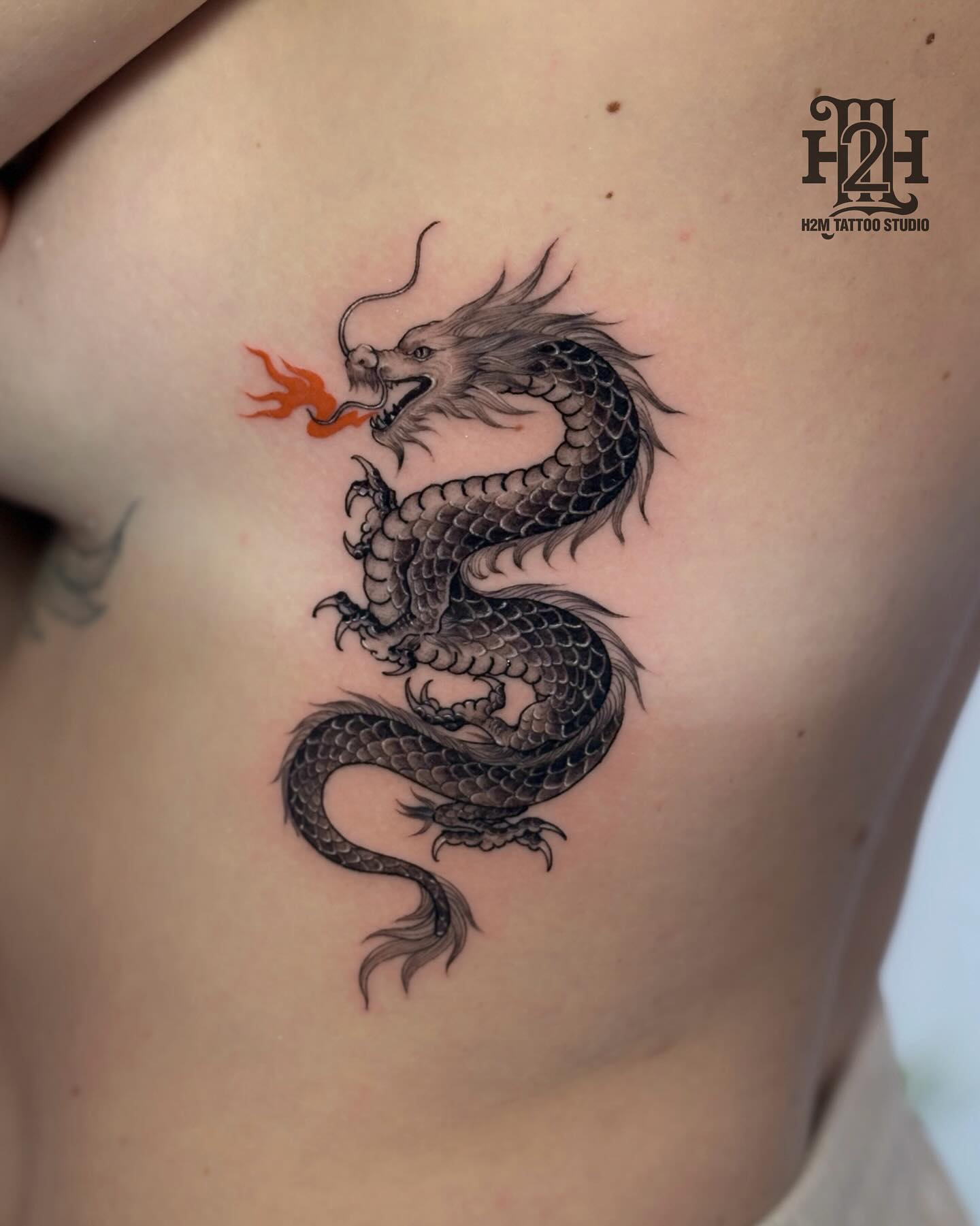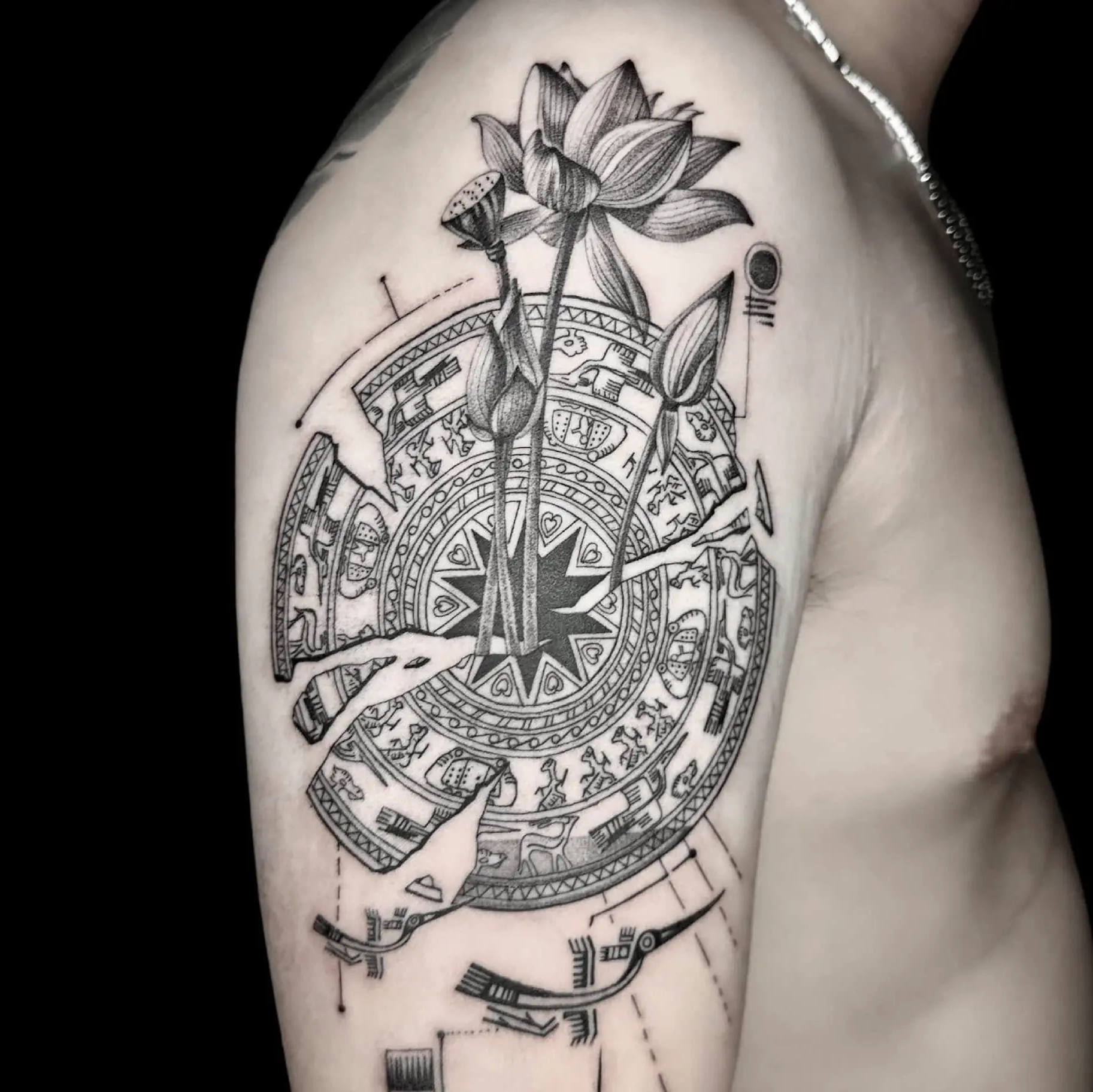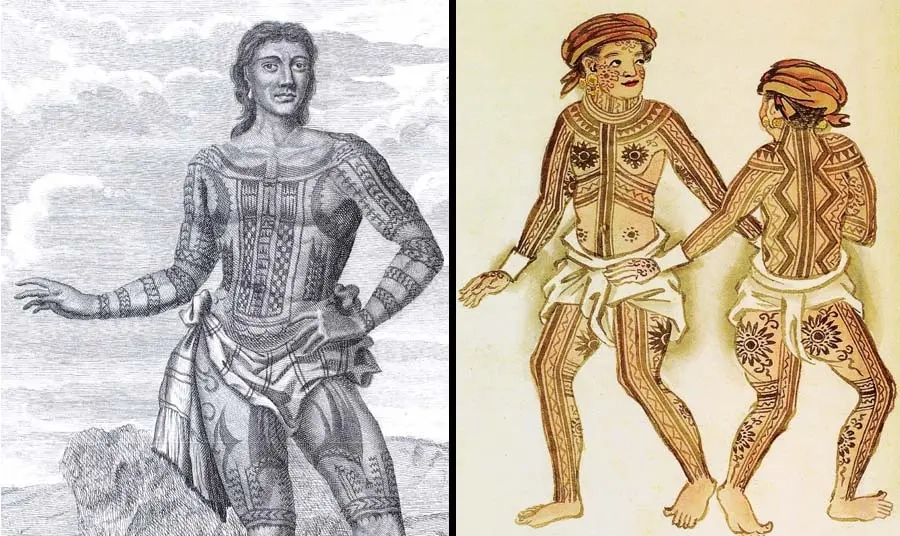>>>> READ MORE: Vietnam Tattoos
An Introduction to Traditional Vietnamese Tattoos
In the world of body art, every stroke of ink tells a story. But some tattoos don't just tell the story of an individual; they carry within them a cultural legacy spanning thousands of years. Such is the case with traditional Vietnamese tattoos. This is not merely an aesthetic trend but a unique artistic heritage, a form of recording history directly onto the skin of the ancient Vietnamese people. Understanding the roots of this art form helps us appreciate the depth of our national identity and pride, while also finding endless inspiration for works that are both personal and culturally profound.
The Origins and Legends of the Tattooing Custom
The journey of Vietnamese tattoos begins at the dawn of its history, tied to a beautiful legend. The story goes that when the Lạc Việt people began to conquer the riverlands, they were often harassed and harmed by sea monsters. Understanding their plight, King Lạc Long Quân taught his people a way to blend in and be protected by the creatures of the water. He instructed them to use ink to tattoo their bodies with the image of the Giao Long, a mighty mythical sea creature. From then on, when the sea monsters saw the tattoos, they would mistake the people for their own kind and leave them unharmed.
The Meaning of the Tattooing Custom for the Ancient Vietnamese
From this legend, the custom of tattooing was born, carrying many layers of deep meaning:
-
Protection and Shelter: The most primal meaning of the tattoo was that of a spiritual amulet. The ancient Vietnamese believed these patterns would help them ward off wild beasts and disasters, and that they would be protected by deities on their journeys through the forests and seas.
-
A Symbol of Courage: To receive a tattoo, one had to endure pain. Therefore, a tattoo also served as a testament to a man's bravery, resilience, and maturity.
-
Expressing Status and Harmony: Tattoos also helped distinguish between different tribes and positions within the community. It was a way for the ancient Vietnamese to show respect for and desire to live in harmony with the natural world around them.
The Development of Tattoo Art During the Trần Dynasty
If the era of the Hùng Kings was the birthplace of the tattooing custom, then the Trần Dynasty (13th - 14th centuries) was its golden age. Under the Trần, tattooing evolved into a distinctive cultural feature, popular among everyone from the king and his mandarins to the common soldiers.
The Dragon Tattoo: A Symbol of Nobility and Military Might
The majestic image of the dragon was especially favored. The Trần kings all had dragon tattoos on their thighs to signify their noble lineage as "Children of the Dragon, Grandchildren of the Fairy." Most famously, the elite Thánh Dực (Divine Wings) army had all its soldiers tattooed with dragons on their chests, backs, and arms. This tattoo not only created a formidable appearance but also symbolized invincible strength and absolute loyalty to the throne.

Diversity in Other Motifs
Besides the dragon, the tattoo art of the Trần period also flourished with other motifs of fierce beasts like tigers, leopards, and eagles. Each tattoo was believed to bestow upon its wearer the power, agility, and spirit of that creature.
>>>> SEE MORE: Top 10 traditional vietnamese tattoos and Their Meanings
Popular Symbols and Tattoo Motifs
Ancient Vietnamese tattoo art possesses a rich treasury of unique and characteristic motifs, with the most prominent being symbols that carry the soul of the nation.
The Meaning of Đông Sơn Drum Motifs
The Đông Sơn drum is a masterpiece of the ancient Vietnamese, and its engravings are an endless source of inspiration for traditional tattoos.
-
The Central Sun: Represents life, light, and the supreme power of nature.
-
Circling Lạc Birds: Symbolizes the aspiration for freedom and the connection between heaven and earth.
-
Figures of Boats and People: Depicts community life and the spirit of solidarity in labor and combat. When incorporated into a tattoo, these motifs create a piece that is both aesthetically unique and culturally profound.

>>>> READ MORE: Dong son drum tattoo
Other Spirit Animal Symbols
-
The Lạc Bird: A mythical creature of the Vietnamese people, the Lạc bird tattoo represents a resilient spirit, an unwillingness to be subdued, and a soul of freedom.
-
The Carp: Associated with the legend of "the carp leaping over the waterfall to become a dragon," a carp tattoo symbolizes perseverance, the effort to overcome challenges to achieve success, and a beautiful transformation.
>>>> READ MORE: 7 Stunning vietnam traditional dress tattoo Designs That Honor Cultural Heritage
The Decline and Powerful Revival of Ancient Tattoo Art
Through the upheavals of history and the introduction of other cultural ideologies, especially Confucianism with its belief in keeping the body "given by one's parents" pristine, the custom of tattooing gradually faded. For a time, it was even stigmatized as a mark of untrustworthy people.
Ancient Tattoo Art in Modern Life
However, in recent decades, along with a resurgence of national pride, ancient tattoo art has experienced a strong revival. Many young people and dedicated tattoo artists have returned to their roots, researching and recreating ancient patterns. Today, a Đông Sơn drum or Lạc bird tattoo is not just an accessory; it is a declaration of identity, a way for the younger generation to proudly and creatively carry the legacy of their ancestors into the modern world.
Frequently Asked Questions (FAQs)
-
Are traditional Vietnamese tattoos suitable for women? Absolutely. Art does not discriminate by gender. Ancient motifs like the lotus or the Lạc bird can be adapted with softer, more delicate lines to create pieces that are both feminine and rich in cultural meaning.
-
Are there any spiritual considerations or taboos with ancient motifs? The most important thing is respect. You should choose symbols that you truly understand and connect with. At H2M, we will consult with you thoroughly to help you select a tattoo that best fits your story and beliefs.
-
Can I create a custom design based on ancient patterns? Of course. That is the very spirit of modern tattoo art. We encourage using ancient motifs as inspiration to create a unique design that both preserves the cultural soul and expresses your individual personality.
-
What is the design process for a Vietnamese-inspired tattoo at H2M? The process includes several steps: a consultation to listen to your story and desires, collaborative research on suitable symbols, sketching the design, making revisions until you are completely satisfied, and finally, meticulously and safely applying the artwork to your skin.
>>>> TRY MORE: vietnamese tribal tattoo
📍Experience Traditional Tattoo Vietnam at H2M Tattoo Studio
Looking to get more than just a tattoo while visiting Vietnam? At H2M Tattoo Studio, we specialize in combining ancient Vietnamese symbolism with modern techniques. Whether it’s a dragon to show strength, a lotus for inner peace, or an ethnic tribal band, our artists will guide you through the story behind every line of ink.
We're located in the heart of Hanoi’s Old Quarter — just a short walk from Hoàn Kiếm Lake.
Ready to wear Vietnam’s heritage on your skin?
From a protective belief of the ancient Vietnamese to a symbol of power under the Trần Dynasty, and now a revived artistic heritage, the traditional Vietnamese tattoo has undergone a long and impressive journey. Each piece is not just ink on skin; it is the crystallization of history, culture, and national pride. If you are searching for a tattoo that is not only visually beautiful but also deeply meaningful, we invite you to H2M Tattoo Studio. We are always ready to listen and to join you in continuing the thousand-year-old story of our nation, in your own unique way.
>>>> NOTE NOW:








